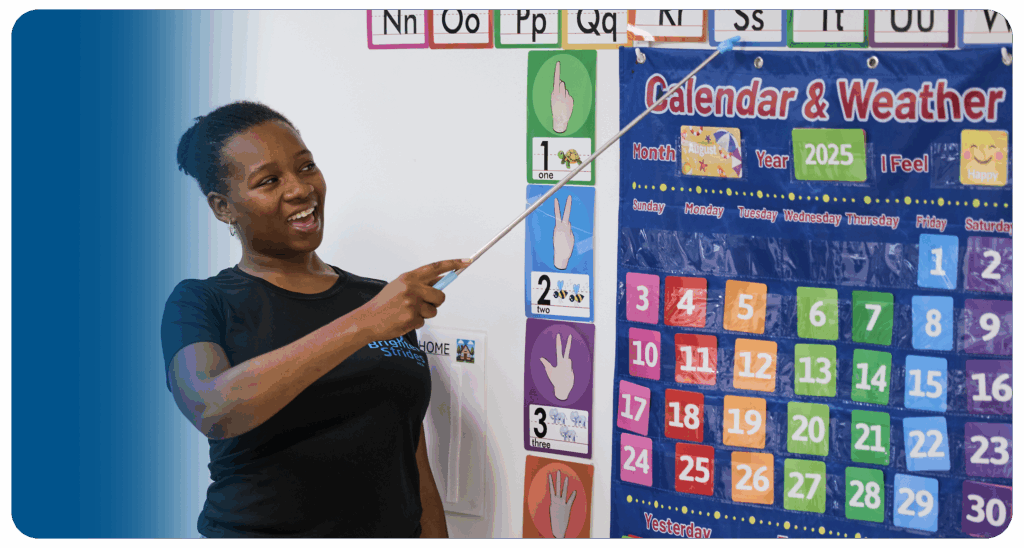Becoming a Registered Behavior Technician (RBT)
If you have a passion for helping individuals with behavioral challenges and want to make a difference in their lives, becoming a Registered Behavior Technician (RBT) may be the right path for you. The RBT certification is a nationally recognized credential that demonstrates your competency in implementing behavior analysis interventions under the supervision of a Board Certified Behavior Analyst (BCBA). Let’s explore the overview of RBT certification and the eligibility requirements to get started on your journey.

Overview of RBT Certification
To become an RBT, you must complete a series of steps that include training, examination, and ongoing education. The process ensures that you have the necessary knowledge and skills to effectively work with clients and apply behavior analysis principles.
The key steps involved in obtaining RBT certification include:
- Complete the 40-Hour RBT Training Course: The first step toward becoming an RBT is to complete a 40-hour training program that covers essential topics in behavior analysis, ethics, professionalism, and hands-on training. This training equips you with the foundational knowledge and skills required to fulfill your role as an RBT (source).
- Pass the RBT Exam: After completing the training course, you will need to pass the RBT exam. The exam assesses your understanding of the principles and concepts covered in the training program. It evaluates your ability to apply behavior analysis techniques and make informed decisions in real-world scenarios.
- Conduct the RBT Competency Assessment: Alongside the training and exam, you will be required to complete a competency assessment. This assessment involves demonstrating your ability to implement behavior analysis interventions under the supervision of a BCBA. It includes direct observation and evaluation of your skills in various applied settings.
- Maintain RBT Certification: Once you have successfully obtained your RBT certification, it is crucial to maintain it by meeting annual renewal requirements and completing continuing education. This ensures that you stay updated with the latest developments in the field and continue to enhance your skills (source).
Eligibility Requirements for RBT Certification
To be eligible for RBT certification, you must meet the following requirements:
- Possess a high school diploma or equivalent.
- Be at least 18 years old.
- Demonstrate a clear criminal background check.
- Complete the required 40-hour RBT training program.
- Pass the RBT exam.
- Successfully complete the RBT competency assessment.
Meeting these requirements allows you to pursue RBT certification and begin your rewarding career as a Registered Behavior Technician.
By becoming an RBT, you will have the opportunity to work directly with clients, implement behavior analysis interventions, and make a positive impact on their lives. It is a fulfilling profession that requires dedication, compassion, and a commitment to ongoing learning and professional development.
Training and Education for RBT Certification
To become a Registered Behavior Technician (RBT), individuals must undergo specific training and education. This section will cover the 40-hour RBT training course and the topics that are covered during this training.
The 40-Hour RBT Training Course
The first step towards becoming an RBT is completing a 40-hour training course that is specifically designed to meet the requirements set by the Behavior Analyst Certification Board (BACB). This course provides comprehensive instruction on the principles and practices of applied behavior analysis (ABA) and equips individuals with the necessary skills to work effectively as an RBT.
The RBT training course can be completed either in person or online, giving individuals the flexibility to choose the learning format that best suits their needs. This course is typically delivered by a qualified trainer who has expertise in ABA and is approved by the BACB.
Topics Covered in RBT Training
During the 40-hour RBT training course, a wide range of topics related to behavior analysis and ethical considerations are covered. These topics equip individuals with the knowledge and skills required to provide effective behavior intervention and support under the supervision of a Board Certified Behavior Analyst (BCBA) or a Board Certified Assistant Behavior Analyst (BCaBA). Some of the key topics covered in the RBT training course include:
- Measurement: Learning how to collect and record data accurately to track behavior change.
- Assessment: Understanding different assessment methods used to evaluate behavior and develop treatment plans.
- Skill Acquisition: Learning strategies to teach new skills to individuals using behavior analytic techniques.
- Behavior Reduction: Understanding and implementing interventions to decrease challenging behaviors.
- Documentation: Learning how to maintain accurate and detailed records of behavior change and treatment progress.
- Professional Conduct: Understanding and adhering to ethical guidelines and professional standards in the field of ABA.
- Scope of Practice: Recognizing the boundaries and limitations of an RBT’s role in providing behavior analysis services.
By covering these topics, the RBT training course ensures that individuals have a solid foundation in ABA principles and practices, enabling them to provide effective support to individuals with behavioral challenges.
Completing the 40-hour training course is an important step towards becoming an RBT. However, it is important to note that it is not the only requirement. After the training, individuals must also pass a competency assessment conducted by a qualified assessor to demonstrate their proficiency in applying the skills and knowledge acquired during the course.
By successfully completing the 40-hour training course and passing the competency assessment, individuals are well on their way to becoming a Registered Behavior Technician (RBT). This certification opens doors to exciting opportunities in the field of applied behavior analysis, where RBTs can provide valuable support to individuals with behavioral challenges under the supervision and collaboration of BCBAs or BCaBAs.
The RBT Exam and Competency Assessment
To become a Registered Behavior Technician (RBT), individuals must demonstrate their knowledge and skills through the RBT exam and competency assessment. These assessments are designed to ensure that RBTs possess the necessary competencies to provide effective behavior analysis services.
Overview of the RBT Exam
The RBT exam is a multiple-choice examination that consists of 75 questions. To pass the exam, individuals must score at least 80% (source). The exam covers a wide range of topics related to applied behavior analysis (ABA) principles and practices. It assesses an individual’s understanding of concepts such as behavior reduction, skill acquisition, data collection, and ethical considerations.
The RBT exam is administered through Pearson VUE testing centers. It is important for aspiring RBTs to thoroughly review the content covered in the exam and utilize study materials provided by reputable sources to increase their chances of success.
The RBT Competency Assessment
After completing the 40-hour RBT training course, individuals must undergo the RBT Competency Assessment to demonstrate their practical skills and abilities. This assessment consists of a written exam as well as a skill-based assessment conducted by a qualified supervisor, typically a Board Certified Behavior Analyst (BCBA) (source).
The written exam component of the RBT Competency Assessment evaluates an individual’s understanding of various ABA concepts and their application in different scenarios. It may include questions related to behavior reduction strategies, data collection methods, and ethical considerations.
The skill-based assessment portion of the RBT Competency Assessment allows individuals to demonstrate their practical skills in implementing behavior intervention plans, collecting data, and effectively communicating with clients and their families. This assessment is typically conducted in a real-world setting, such as a client’s home or a clinical setting, under the supervision of a qualified BCBA.
Successful completion of both the written exam and the skill-based assessment is necessary to obtain RBT certification. It is important for individuals to prepare for the competency assessment by practicing the skills they have learned during their training and seeking feedback from their supervisors.
By successfully passing the RBT exam and competency assessment, individuals can attain the RBT certification and embark on a rewarding career as a Registered Behavior Technician.
Maintaining RBT Certification
Once you have obtained your Registered Behavior Technician (RBT) certification, it’s essential to understand the requirements for maintaining your certification. This section will cover the annual renewal requirements and the continuing education necessary for RBTs.
Annual Renewal Requirements
RBT certification must be renewed annually to ensure ongoing competence. As part of the renewal process, individuals are required to complete certain requirements and pay the renewal fee. The current renewal fee for RBT certification is $35.
To maintain your RBT certification, you must fulfill the following requirements:
- Complete the annual RBT Renewal Competency Assessment: This assessment ensures that you have maintained the necessary skills and knowledge required for the role of an RBT. It evaluates your competence in areas such as measurement, assessment, skill acquisition, behavior reduction, documentation, and professionalism (Source).
- Obtain a criminal background check: It is important to maintain a clean record to ensure the safety and well-being of the clients you work with. This background check helps to identify any potential issues that may affect your ability to provide effective services.
By completing these annual renewal requirements, you can ensure that your RBT certification remains active and up to date.
Continuing Education for RBTs
Continuing education plays a vital role in the professional development of RBTs. It allows you to expand your knowledge, stay updated on the latest research and best practices, and enhance your skills as a behavior technician.
The Behavior Analyst Certification Board (BACB) requires RBTs to complete continuing education credits to maintain their certification. The specific number of continuing education units (CEUs) required may vary depending on your region or state. CEUs are typically earned by participating in workshops, conferences, webinars, or online courses that are relevant to the field of applied behavior analysis.
Continuing education helps RBTs stay informed about advancements in the field and provides opportunities for ongoing learning and growth. It enables you to deepen your understanding of behavior analysis principles, refine your intervention strategies, and stay up to date with ethical guidelines and professional conduct expected of RBTs.
By actively engaging in continuing education, you demonstrate your commitment to professional development and ensure that you are providing the best possible care to the individuals you work with.
Remember, as an RBT, you are expected to adhere to the Professional and Ethical Compliance Code for Behavior Analysts, which outlines the ethical guidelines and professional conduct expected of RBTs in their practice (Source). It is important to remain ethical and professional in all aspects of your work as an RBT.
By fulfilling the annual renewal requirements and engaging in continuing education, you can maintain your RBT certification and continue to make a positive impact in the field of applied behavior analysis.
The Role of an RBT
Registered Behavior Technicians (RBTs) play a crucial role in the field of Applied Behavior Analysis (ABA) by assisting in the implementation of behavior-analytic services and interventions. RBTs work under the direct supervision of a Board Certified Behavior Analyst (BCBA) or a Board Certified Assistant Behavior Analyst (BCaBA) to support individuals in achieving their behavioral goals. Let’s explore the responsibilities of an RBT and their collaboration with BCBAs.
Responsibilities of an RBT
RBTs have diverse responsibilities that contribute to the success of individuals receiving ABA services. Some of the key responsibilities of an RBT include:
- Implementing Behavioral Interventions: RBTs are responsible for delivering behavior-analytic interventions designed by their supervising BCBA or BCaBA. These interventions may target various areas such as communication, social skills, and daily living skills.
- Collecting Data: During therapy sessions, RBTs collect data to track the progress of individuals and evaluate the effectiveness of the implemented interventions. Data collection helps in making data-driven decisions to modify treatment plans as needed.
- Assisting with Assessments: RBTs may assist in conducting individualized assessments to gather baseline data, identify areas of improvement, and measure progress. These assessments provide valuable information for the BCBA to develop appropriate treatment plans.
Supervision and Collaboration with BCBAs
RBTs are required to work under the supervision of a BCBA or BCaBA. This supervision ensures that the RBT is providing high-quality services and adhering to ethical guidelines in the field of ABA. Supervision involves regular meetings between the RBT and the supervisor to review progress, discuss treatment plans, and provide guidance.
Collaboration between RBTs and BCBAs is essential for effective treatment implementation. RBTs communicate the progress, challenges, and areas of improvement observed during therapy sessions to their supervisor, who then adjusts treatment plans accordingly. This collaboration ensures that the interventions are tailored to meet the specific needs of each individual.
RBTs work closely with BCBAs to create a supportive and structured environment for individuals receiving ABA services. The ongoing supervision and collaboration between these professionals contribute to the overall success of the treatment process.
Understanding the role and responsibilities of an RBT is crucial for individuals considering a career in the field of ABA. RBTs have the opportunity to make a meaningful impact on the lives of individuals with behavioral challenges, working alongside BCBAs to promote positive changes and improve quality of life.
Career Paths in Applied Behavior Analysis (ABA)
In the field of Applied Behavior Analysis (ABA), there are various career paths available for individuals interested in working with individuals with autism and related developmental disorders. Two common roles within ABA are Registered Behavior Technicians (RBTs) and Board-Certified Behavior Analysts (BCBAs). Let’s explore the roles and responsibilities of each and the steps required to become a BCBA.
RBT vs. BCBA: Roles and Responsibilities
Both RBTs and BCBAs play integral roles in providing ABA therapy, which is considered the gold standard for autism therapy (Heartlinks). RBTs work under the direct supervision of a BCBA and execute treatment plans designed by BCBAs. They are responsible for implementing behavioral interventions and assisting with individualized assessment procedures. RBTs collect data during therapy sessions and communicate the client’s progress and areas of improvement to their supervisor, the BCBA.
On the other hand, BCBAs have additional responsibilities in the field of ABA. BCBAs develop treatment programs and oversee the treatment plans of individuals with autism. They conduct intake interviews, assessments, and collaborate with the client’s family and other stakeholders. BCBAs use their expertise to analyze data, make data-driven decisions, and modify treatment plans as needed to ensure the best outcomes for their clients (Heartlinks).
Steps to Become a BCBA
Becoming a BCBA involves specific educational and experiential steps. Here is an overview of the typical requirements to become a BCBA:
- Obtain a Bachelor’s Degree: Start by earning a bachelor’s degree in a field related to behavior analysis, psychology, or education. This provides a foundation for further study in ABA.
- Pursue a Master’s Degree: To become a BCBA, a master’s degree in ABA or a related field is required. This advanced degree provides in-depth knowledge and prepares individuals for the BCBA certification exam.
- Complete ABA Coursework: As part of the master’s degree program, individuals must complete 315 hours of ABA coursework. These courses cover various topics related to behavior analysis, ethics, assessment, and intervention strategies.
- Gain Supervised Experience: BCBA candidates must complete 1,500-2,000 hours of supervised fieldwork. This experience involves working directly with individuals under the supervision of a qualified BCBA specialist. The fieldwork provides hands-on training and allows candidates to apply the principles of ABA in real-world settings.
- Pass the BCBA Exam: After completing the required coursework and fieldwork, individuals must pass the BCBA certification exam. The exam assesses knowledge across various domains of behavior analysis, including assessment, intervention, ethics, and professional conduct.
- Maintain BCBA Certification: Once certified, BCBAs must engage in continuing education to keep their knowledge and skills up to date. This involves completing ongoing coursework and fulfilling renewal requirements set by the Behavior Analyst Certification Board (BACB).
By following these steps, individuals can embark on a rewarding career as a BCBA, making a positive impact on the lives of individuals with autism and their families.
Conclusion
In conclusion, the field of Applied Behavior Analysis (ABA) offers various career paths for individuals interested in making a positive impact on the lives of individuals with autism and related developmental disorders. Registered Behavior Technicians (RBTs) play an integral role in implementing behavior-analytic services and interventions under the supervision of Board Certified Behavior Analysts (BCBAs).
Once certified, it is important for RBTs to maintain their certification by fulfilling annual renewal requirements and engaging in continuing education. For those interested in pursuing a career as a BCBA, there are specific educational and experiential steps required to obtain certification. By following these steps and engaging in ongoing professional development, individuals can make a meaningful impact on the lives of those they serve through evidence-based practices and ethical conduct.
Sources
- https://www.bacb.com/
- https://www.bacb.com/wp-content/uploads/2020/05/RBTHandbook_210513.pdf
- https://heartlinksaba.com/career-paths-for-rbt-and-bcba/





